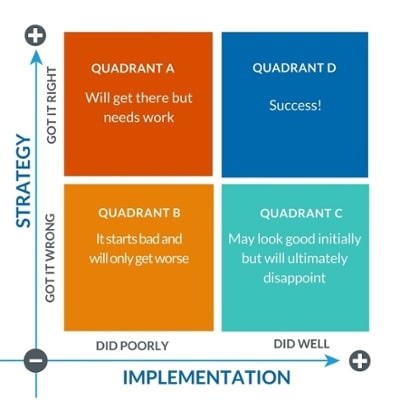The main causes of facilities management outsourcing failure and how to fix it

I was talking to an industry colleague the other day when he said to me, ”We had a complete disaster with so and so organisation.” When I asked why the answer was, “They got the model all wrong. It was never going to work.”
Unfortunately, this situation is far too common for major contracting and outsourcing of facilities management (FM), asset management and corporate real estate (CRE).
When then the service delivery strategy is not clearly articulated, or when the contracting model has not been thought through, the outcome is disappointment and frustration.
What is even more frustrating is when the naysayers then light up with, ”Well it just doesn’t suit our businesses/industry.” Or worse, ”Outsourcing never works”. Both of these comments are, to use a popular term, alternative facts. They do not relate to reality nor are they formed from any objective analysis.
If properly thought through and executed, outsourcing can add substantial value. If done poorly, it is usually due to problems with the way it was done or in other words, the client.
So what’s happening then?
Clearly, something is going on if it occurs regularly? Yes, it is. While the issues can be multiple, the causes boil down to either:
- the wrong strategy
- poorly implemented strategy
It’s important to separate the two causes as their issues and ultimately their fixes are also different.
So how do I know which is which?
To understand the problem is to begin the journey to improvement. Below is a simple diagnostic with some notes on what to look for and how to respond.

Quadrant A – The strategy is right but the transition was poor

This is usually the result of a rushed transition or one where insufficient resources were applied. Either way it’s not going well. The good news is, this is the easiest fix.
The signs that implementation is the issue include:
- inability to get reporting
- lack of trust in the data
- confusion with customers
- spot fires everywhere
- cracks starting to appear in the relationship
You are so busy fixing operational issues that you can’t even see the time where the real benefits will arrive.
The fix is to apply the resources you should have at transition and sort the issues one by one. Establish a project team, apologise to your customers and work with your provider to address the shortcomings.
If your strategy is sound then it’s worth the effort.
Quadrant C – You’ve implemented but have not seen the benefits

Doing the wrong thing well is the road to disappointment. Without the right contracting and service delivery strategy it’s never going to deliver the benefits that you and your customers expect – regardles of how it is implemented.
The signs that implementation is the issue include:
- lack of clarity on the scope or accountabilities
- persistent KPI failures
- inability to deliver savings or other promised benefits
- the need for significant or multiple contract variations
- staff turnover within the service provider’s team
- frustration across the board and questions about the whole project.
While ever you and the service provider are not aligned by way of the right strategy, the benefits will never be realised.
The fix is to go back to the strategy and get it sorted. This will take time, will involve contract changes and may even require a whole new contract. You can put it off but ultimately you have to face the music as you and your provider are not dancing to the same tune!
This is a hard fix but with the right approach it can be resolved.
Quadrant B – The strategy was not right AND the transition didn’t go well

If this has occurred you are in a world of pain. Chances are you are experiencing all of the issues noted in the other two scenarios. The other key symptom is the blame game – with lots of finger pointing going on.
There is no easy fix for this situation as it will require both triage to address the immediate issues caused by transition and then a longer term fix to address the contractual and relationship issues.
Again, acknowledgment of the problem is the first step to addressing it. This can be hard if those who established the contract are also required to develop the fix. Tough. Face up or it’s never going to improve.
How to avoid it in the first place
The best cure is prevention. Take the time to understand the strategic options and how to best implement them. There are plenty of successful examples in the market of long-term relationships that have added substantial value to draw from.
Finally, remember context is everything. What worked for one business may not work for yours. The solution is to take good workable strategies and have them tailored to meet the specific requirements of your business and customers.
Learn more about optimising your property function
To help organisations optimise their property function, we created an Organisational Assessment Framework that is specially designed for property, facilities, assessment and property functions. It is based on more than 20 years of consulting and management experience in assessing and optimising property functions and can be used to identify issues and target improvements.






